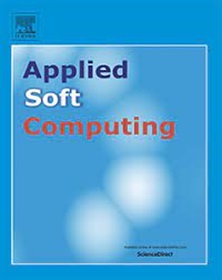MACityChat:融合遥感专业大模型与通用大模型的多域城市土地利用分析
IF 6.6
1区 计算机科学
Q1 COMPUTER SCIENCE, ARTIFICIAL INTELLIGENCE
引用次数: 0
摘要
城市化仍然是一个全球趋势,城市土地利用是这一进程的关键组成部分。土地利用的有效整合和管理对城市的可持续发展至关重要。传统的城市土地利用分析方法可以非线性拟合土地利用变化的动态模型,但面临两个挑战:一是现有技术的分析过程往往是一个黑箱,原理未知,降低了结果的可靠性和真实性;其次,传统的机器学习只能从遥感等单一领域分析城市土地利用变化,忽略了经济和社会因素的影响。我们提出了一个可解释的城市土地利用变化分析任务,并设计了MACityChat,这是一个将遥感特定大型模型与通用大型语言模型相结合的框架,用于多学科广义分析,同时还将模型的分析结果可视化。该框架将遥感图像输入到遥感大模型中,该模型将图像中的语义对象转换为文本描述。然后将这些描述输入到一个通用的大型语言模型中。一个区域标签引导模块指导通用语言模型,以结合当地的经济,政策和文化知识,以执行广义分析。最后,将分析结果在遥感图像上可视化,为城市土地利用提供了详细的考察。大量的实验表明,MACityChat可以提供详细有效的城市土地利用变化分析,并将这些分析可视化,为城市土地利用问题提供可解释和优越的解决方案。本文章由计算机程序翻译,如有差异,请以英文原文为准。
MACityChat: Integrating remote sensing professional large model with general-purpose large model for multi-domain urban land use analysis
Urbanization remains a global trend, with urban land use being a key component of the process. The effective integration and management of land use are critical for the sustainable development of cities. Traditional urban land use analysis methods can fit dynamic models of land use changes nonlinearly, but they face two challenges: First, the analysis process of existing technologies is often a black-box, with unknown principles, reducing the reliability and authenticity of results. Second, traditional machine learning can only analyze urban land use changes from a single domain, such as remote sensing, overlooking the influence of economic and sociological factors. We propose an interpretable urban land use change analysis task and design MACityChat, a framework that combines remote sensing-specific large models with general-purpose large language models for multidisciplinary generalized analysis, while also visualizing the model’s analytical results. In this framework remote sensing images are input into a remote sensing large model, which transforms the semantic objects in the images into textual descriptions. These descriptions are then fed into a general-purpose large language model. A regional tag-guiding module directs the general-purpose language model to incorporate local economic, policy, and cultural knowledge to perform generalized analysis. Finally, the analysis results are visualized on the remote sensing images, providing a detailed examination of urban land use. Extensive experiments show that MACityChat can provide detailed and effective analyses of urban land use changes and visualize these analyses, offering an interpretable and superior solution to urban land use problems.
求助全文
通过发布文献求助,成功后即可免费获取论文全文。
去求助
来源期刊

Applied Soft Computing
工程技术-计算机:跨学科应用
CiteScore
15.80
自引率
6.90%
发文量
874
审稿时长
10.9 months
期刊介绍:
Applied Soft Computing is an international journal promoting an integrated view of soft computing to solve real life problems.The focus is to publish the highest quality research in application and convergence of the areas of Fuzzy Logic, Neural Networks, Evolutionary Computing, Rough Sets and other similar techniques to address real world complexities.
Applied Soft Computing is a rolling publication: articles are published as soon as the editor-in-chief has accepted them. Therefore, the web site will continuously be updated with new articles and the publication time will be short.
 求助内容:
求助内容: 应助结果提醒方式:
应助结果提醒方式:


